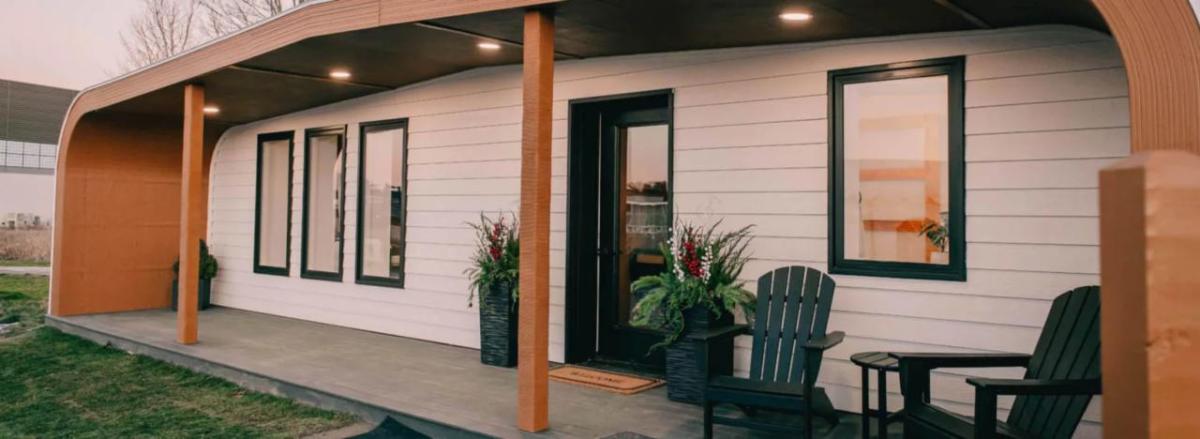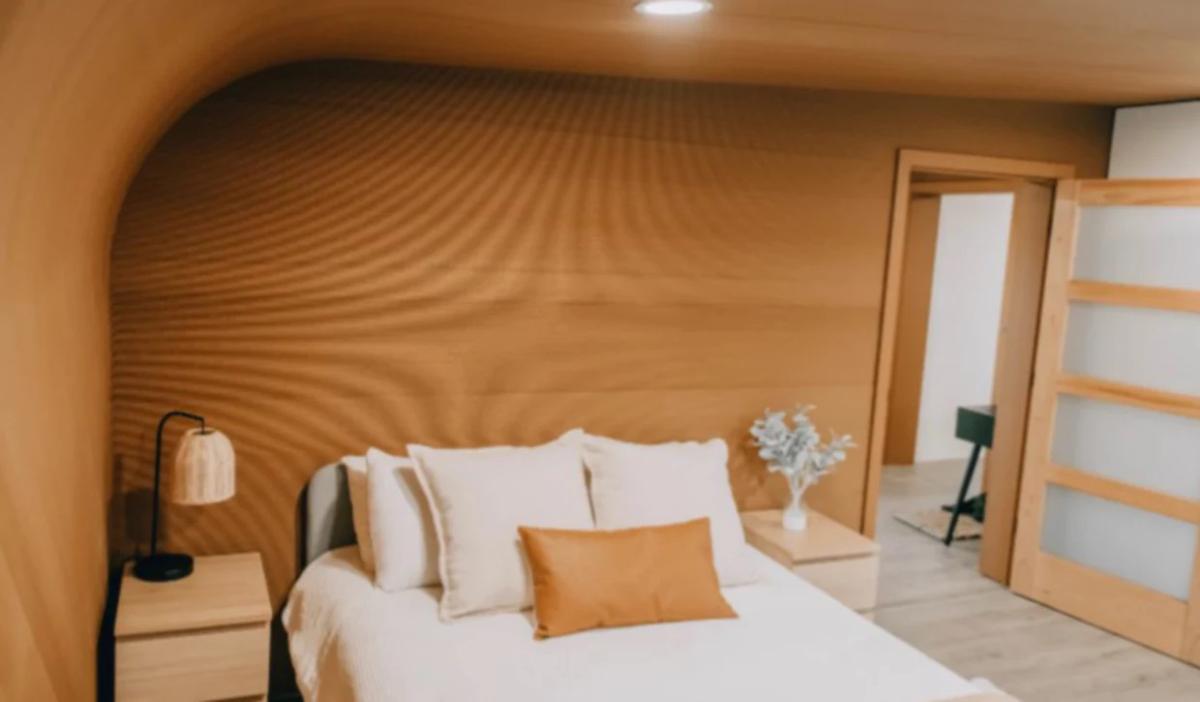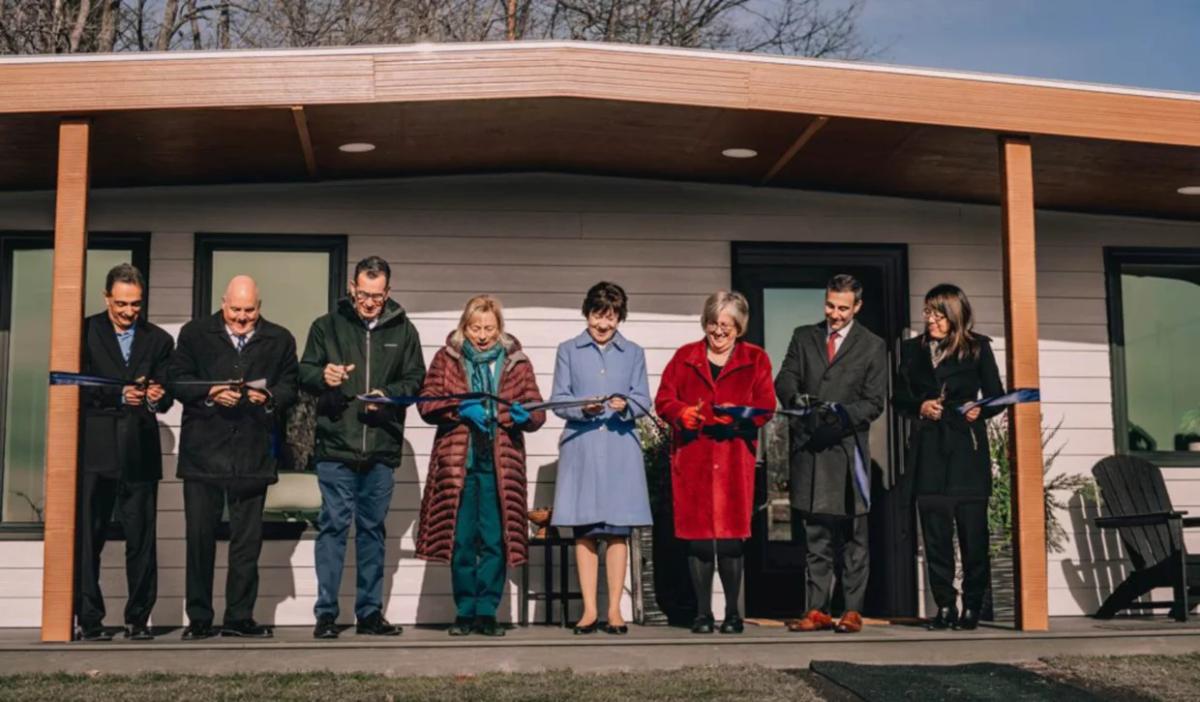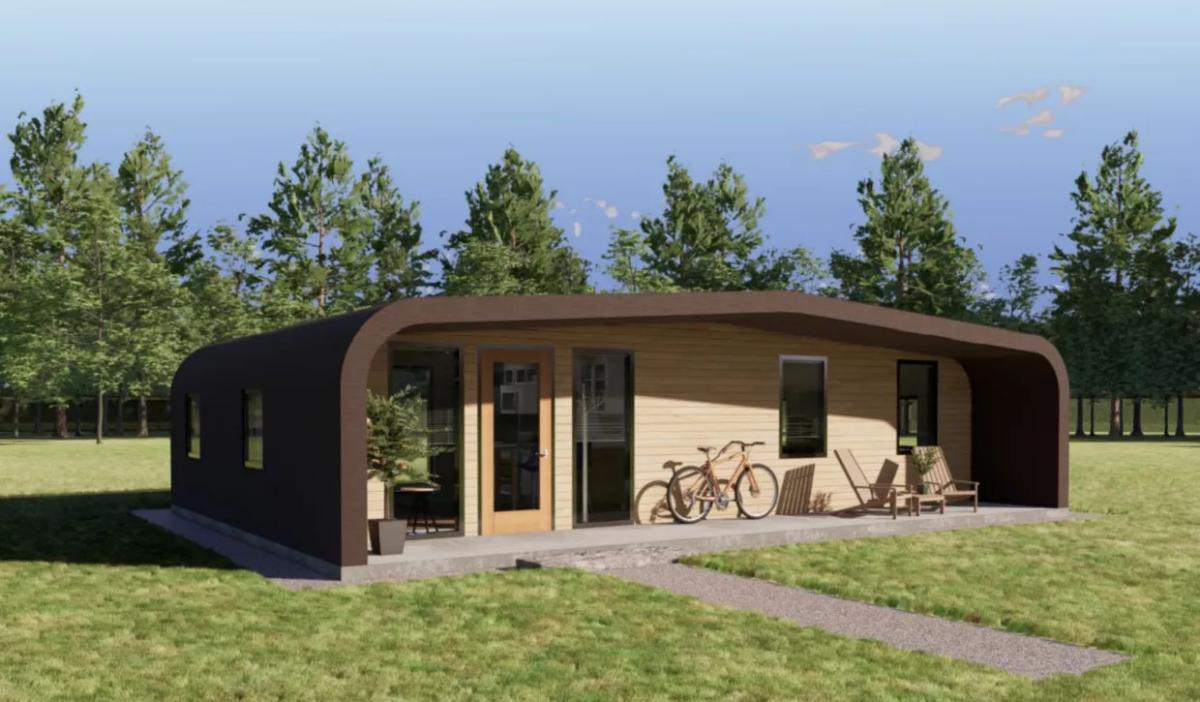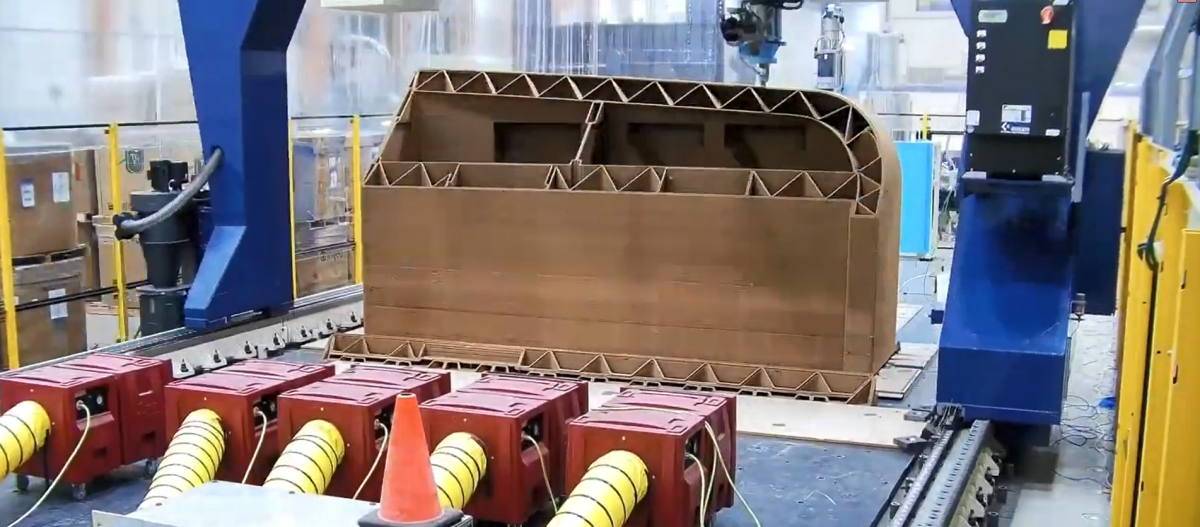World’s First 3D-Printed Fully Biobased Home, Built on GP Product
MT. JEWETT, PA., January 16, 2023 /3BL Media/ - Georgia-Pacific’s wood products have been used in millions of homes, but never one quite like this.
It’s being called the world’s first 100% biobased home printed on the world’s largest 3D printer, and Georgia-Pacific is proud to have played a part in the project.
The University of Maine Advanced Structures and Composites Center (ASCC) recently unveiled “BioHome3D,” what they're calling the world's first 3D-printed house made entirely with biobased materials.
The 600-square-foot prototype features 3D-printed floors, walls, and a roof made of wood fibers and bio-resins. GPs medium-density fiberboard was used as a base for the 3D printer to precisely lay down rows of the wood/plastic material, which then hardens and creates the base, walls, ceiling, and roof. The printer is programmed to leave openings for windows and doors and can flow at a rate of 150 pounds per hour, with future expansion to 500 pounds per hour.
The wood-plastic material uses wood flour that consists of ground-up residuals from sawmills and recycled plastic pellets. Georgia-Pacific product was preferred over a previously attempted plastic base or other types of wood bases.
“When the ASCC contacted us about helping with this project, GP gladly provided a full unit of 1-inch, 5-foot by 20-foot panels,” says Steven Paulson, GP technical director. “The Mt Jewett, Pennsylvania MDF plant is proud to have been involved in such a ground-breaking project, with this much value and future potential.”
The house is fully recyclable and highly insulated with 100% wood insulation. Construction waste was nearly eliminated due to the precision of the printing process. Those behind the project hope that the 3D-printed home will help manage the lack of affordable housing.
“With its innovative BioHome3D, UMaine’s Advanced Structures and Composites Center is thinking creatively about how we can tackle our housing shortage, strengthen our forest products industry, and deliver people a safe place to live so they can contribute to our economy,” said Maine Governor Janet Mills.
In addition to Mills, those participating in the unveiling included Senator Susan Collins, Jeff Marootian, senior advisor for energy efficiency and renewable energy for the U.S. Department of Energy, and Habib Dagher, ASCC executive director.
“Many technologies are being developed to 3D print homes, but unlike BioHome3D, most are printed using concrete. However, only the concrete walls are printed on top of a conventionally cast concrete foundation,” said Dagher. “Traditional wood framing or wood trusses are used to complete the roof. Unlike the existing technologies, the entire BioHome3D was printed.”
The home is currently equipped with sensors for thermal, environmental, and structural monitoring to test how it performs through a Maine winter. Researchers expect to use the data collected to improve future designs.
View original content here

